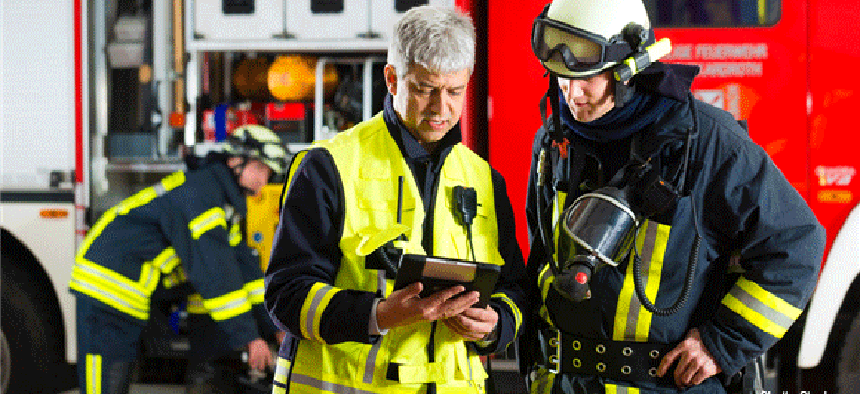FirstNet's first task: Find out what responders need


Connecting state and local government leaders
The success of the First Responder Network Authority's plan for a nationwide network depends on meeting the needs of more than 60,000 federal, state, local and tribal agencies.
Many of the technical details of the First Responder Network Authority’s nationwide emergency network are yet to be worked out, but one thing everyone agrees on is that FirstNet must work closely with state, local and tribal governments to determine the needs of the end users before it defines the technical specifications.
“The needs of urban areas differ dramatically from our nation’s rural areas and farmlands,” said Raymond Lehr, Maryland’s interoperability director. “I can tell you from personal experience in Maryland building a statewide 700 MHz voice communications system for all of our first responders that you have to go to the source — the end users of the systems.”
Although some federal and state officials complain that FirstNet has been slow in reaching out to end users, FirstNet officials say that outreach currently is the organization’s top priority.
“We need to have a clear understanding of the profile of each of the states,” said Susan Swenson, a FirstNet board member. “This is not a trivial undertaking. That is what we are consulting with the states about now.” Initial consultations at the state level will be taking place over the next three to five months.
At the same time, the FirstNet board has to put together a management team, hire a staff and create a budget, while also evaluating the ability of the telecom industry to meet its technical needs.
Current efforts to establish a dedicated national public safety network date to 2007, when the FCC established the regulatory framework for the undertaking. A block of RF spectrum was set aside for it in the 700 MHz band and freed up in 2009 by the shift to digital television. The current First Responder Network Authority was created and given oversight responsibility for the network in Title VI of the Middle Class Tax Relieve and Job Creation Act of 2012. FirstNet is an independent authority within the Commerce Department’s National Telecommunications and Information Administration. The statute makes the Homeland Security secretary, the attorney general and the director of the Office of Management and Budget permanent board members. The remaining 12 board members, from industry and state and local government, were named in August 2012.
The board, without staff, held its first meeting in September and has been organizing itself and laying out a roadmap for determining user needs and industry capabilities over the coming months.
“We’re trying to move as quickly as we can,” Swenson said. “I think we’ve made tremendous progress.”
One of the challenges FirstNet faces will be determining its relationship with public safety networks already under development in some states. This question has resulted in the temporary suspension of development activity under some grants awarded through the American Recovery and Reinvestment Act of 2009.
The NTIA awarded $382.5 million in stimulus funding for seven interoperable broadband public safety networks. They were part of the $4.4 billion ARRA Broadband Technology Opportunities Program intended to accelerate broadband deployment in unserved and underserved areas of the country. The FCC gave conditional authorization for seven communities to use the reserved 700 MHz spectrum to deploy their own public safety networks under the program.
But according to FirstNet’s 2012 report to Congress, the passage of the act in February 2012 “substantially altered the landscape” for the projects. “As a result, on May 11, 2012, NTIA partially suspended the seven BTOP-funded 700 MHz public safety projects to ensure that they proceed in a manner that supports development of the nationwide, interoperable network that meets the letter and spirit of the Act.”
NTIA and FirstNet are working with the grant communities to ensure that the money remains available once they are sure that it would be spent on facilities and equipment that could be incorporated into FirstNet’s network. “NTIA asked the jurisdictions to submit a revised statement of work and budget to determine which non-LTE aspects of their project might continue,” FirstNet said in its report.




